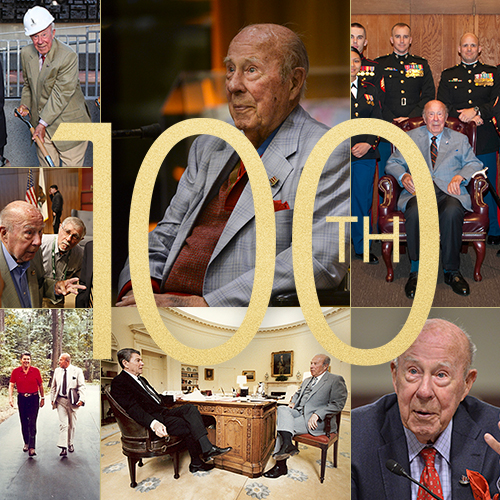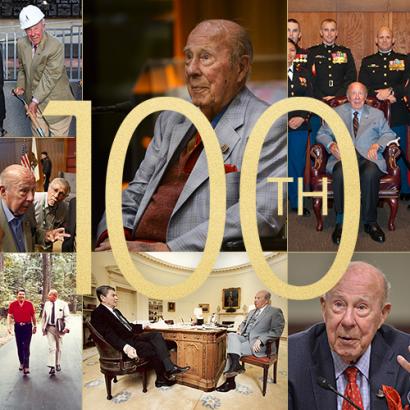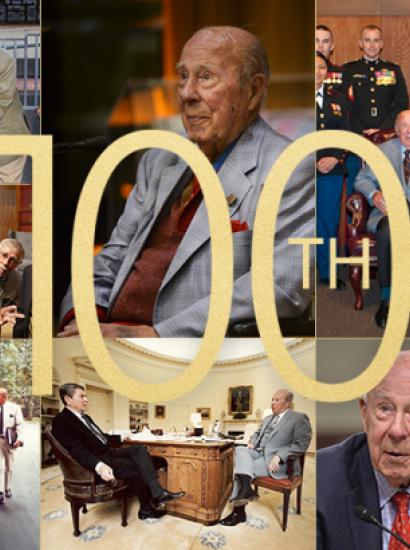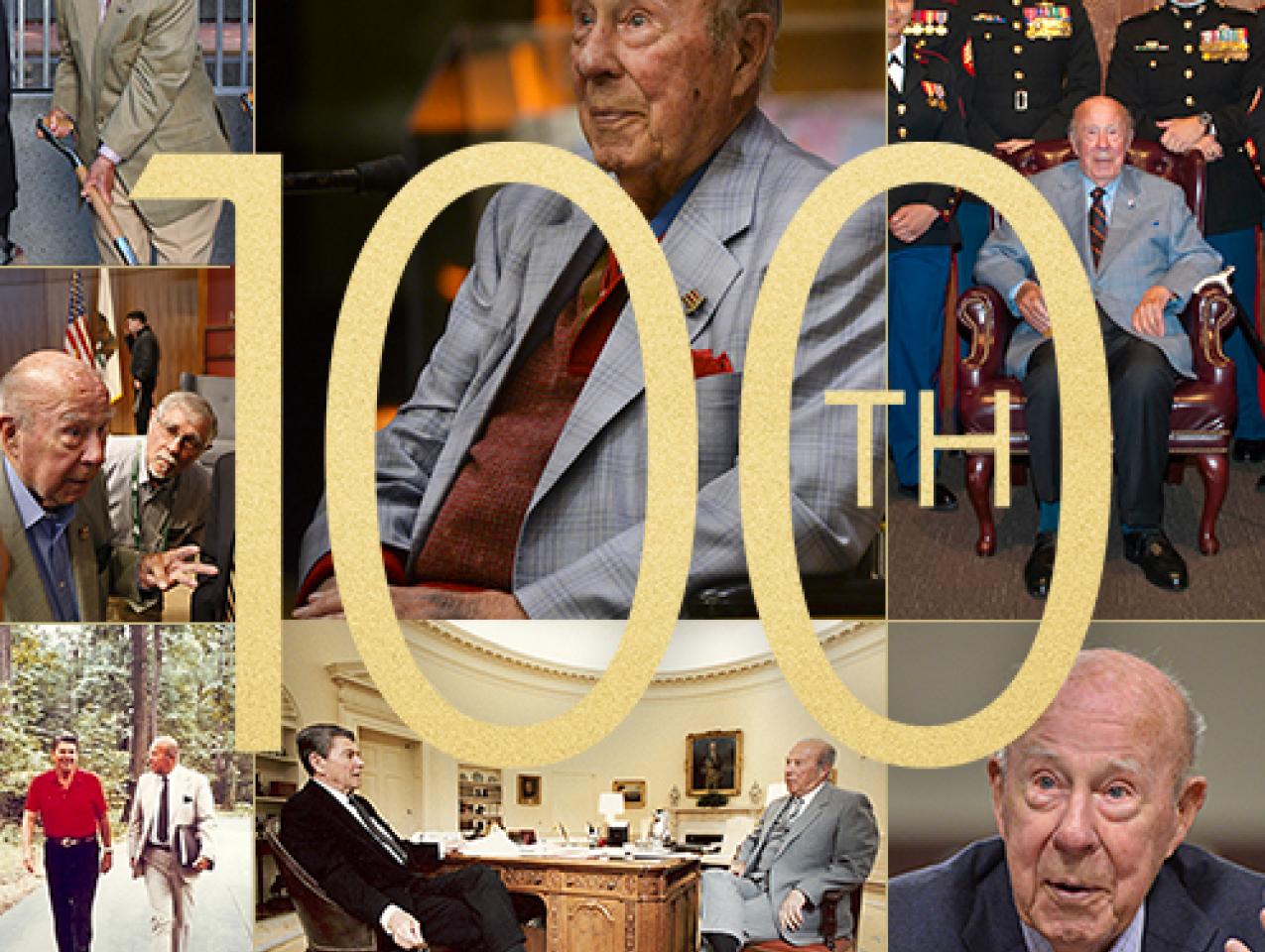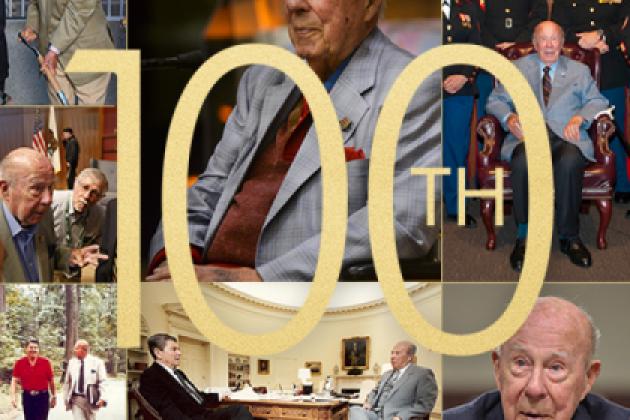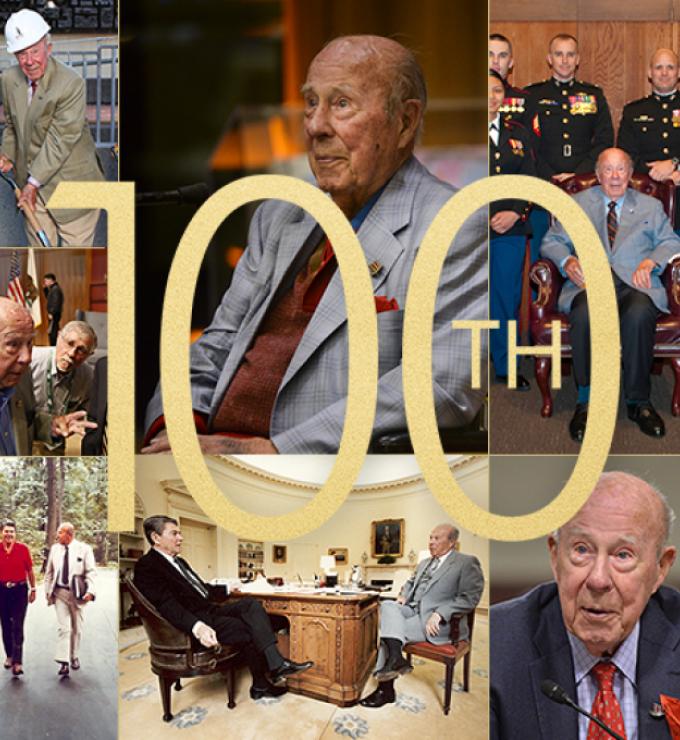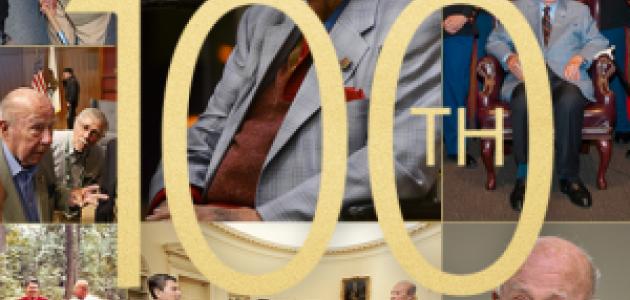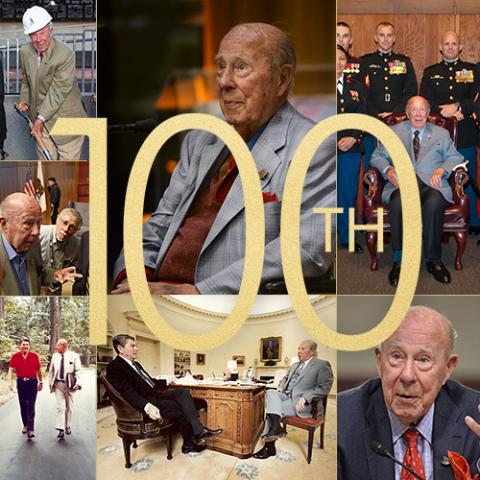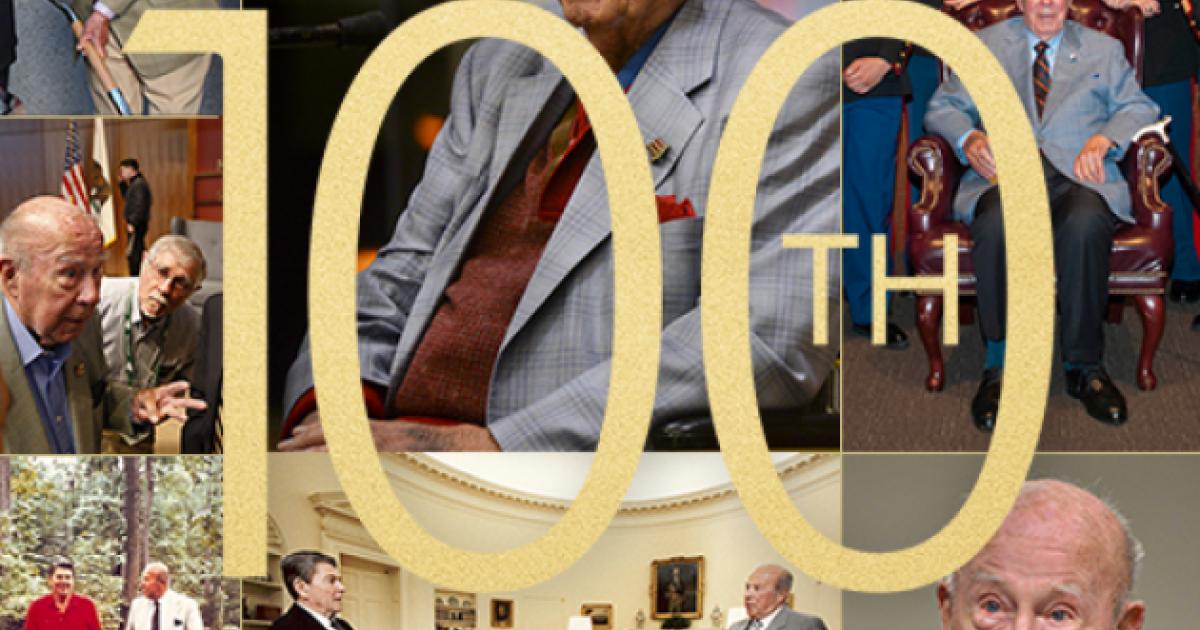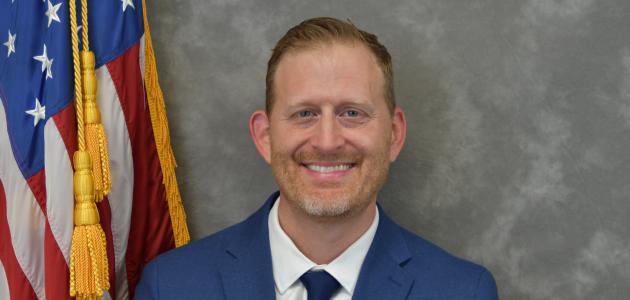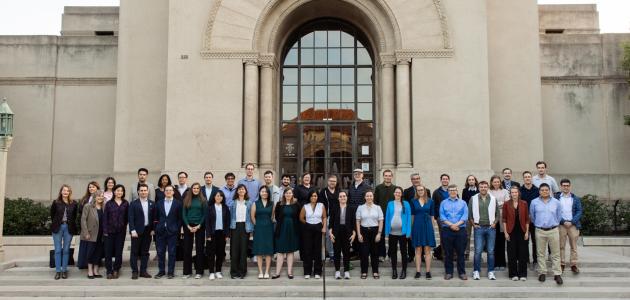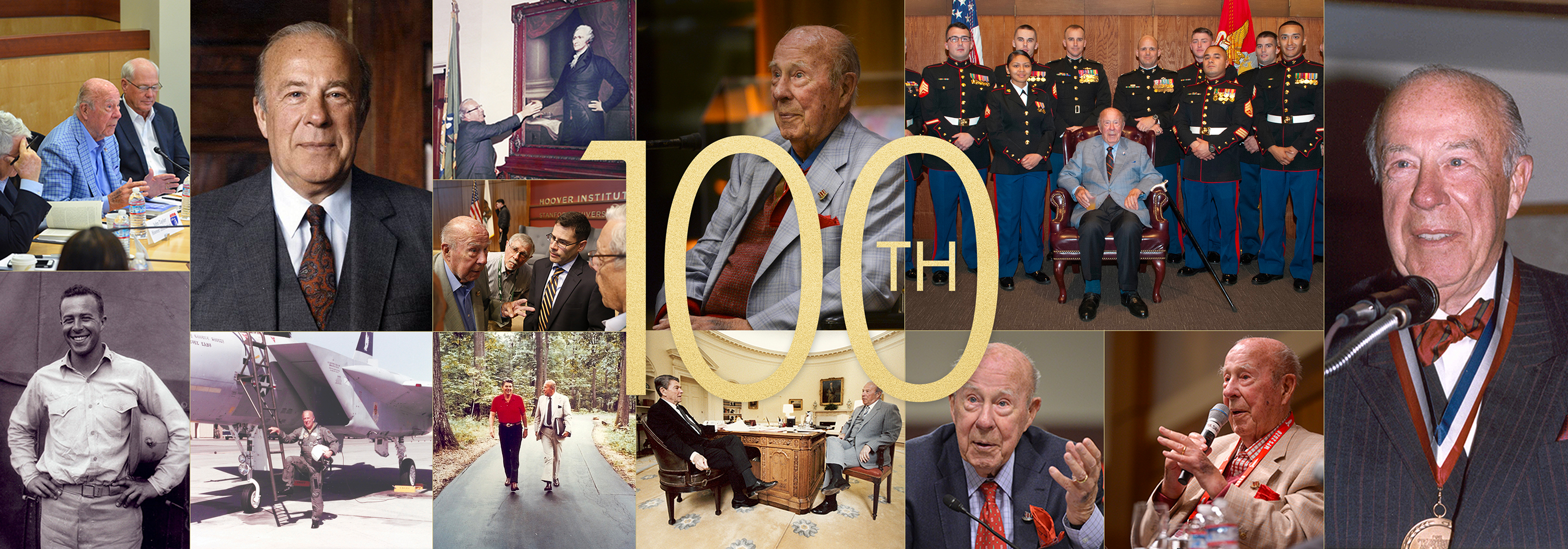
Hoover Institution (Stanford, CA) – Close friends spanning George P. Shultz’s exceptional career of public service celebrated the Hoover distinguished fellow and sixtieth US secretary of state for his centenary this week.
Shultz, who turns one hundred years old on Sunday, December 13, was paid tribute by senior officials he worked with in the Nixon and Reagan administrations, other policymakers he advised when he was outside of government, as well as his colleagues at the Hoover Institution and Stanford University. All recalled memories of Shultz as an honorable public servant and extraordinary leader who lived up to his favorite motto: “trust is the coin of the realm.”
Wednesday’s program, which was off the record, covered Shultz’s contributions in the fields of economics and national security. Participants included George P. Shultz Senior Fellow in Economics John B. Taylor; Wohlford Family Senior Fellow Michael Boskin; Chairman of the Hoover Board of Overseers, Tom Stephenson; Robert and Marion Oster Distinguished Military Fellow Gary Roughead; Tad and Dianne Taube Director Condoleezza Rice; Annenberg Distinguished Visiting Fellow James Ellis; and Davies Family Senior Fellow Amy Zegart.
Stephenson and Rice introduced Friday’s program. Rice said that one word summed up Shultz’s life and career: “patriot.”
Her remarks were followed by Davies Family Distinguished Fellow James Mattis who reflected on Shultz’s service in the Marine Corps, and presentations by luminaries who worked with Shultz on various policy areas including economic growth, international diplomacy, and nuclear disarmament.
Mattis said that Shultz is the same Marine today as he was in World War II during his service in the Pacific Theater.
“He made clear for what he stood for and equally clear what he would not tolerate,” Mattis said. “When George Shultz spoke, you could take it to the bank.”
Offering perspectives on Shultz’s career in economic policy, were former US treasury secretaries Nicholas Brady and Henry Paulson; Mexico’s former secretary of finance and public credit Pedro Aspe; and former chairman of the Federal Reserve Alan Greenspan.
Greenspan said that he became an ally and friend of Shultz when they worked together in the Nixon administration and opposed the president’s decision to implement wage and price controls. Greenspan maintained that Shultz was right to stand firm against a disastrous policy. He explained that Shultz landed on the right side of history again when he advised President Reagan to provide political cover for then Fed Chairman Paul Volcker to keep inflation in check through stable oversight of the money supply. Higher interest rates didn’t bode well for Reagan’s political fortunes during the 1982 mid-term election, but over the long term this monetary policy resulted in unprecedented economic growth and stability in the US economy.
In the following presentation, former Secretary of State James Baker; former US Ambassador to the United Nations Thomas Pickering; and former US Trade Representative Carla Hills praised Shultz for his statesmanship and diplomatic achievements. The three noted Shultz’s tireless dedication in seeing the perspective of all sides of a negotiation and bringing disputes to just and peaceful resolutions. Pickering recalled a story of when he and other foreign service officers were called to Shultz’s office to discuss their next ambassadorial assignments. Shultz pointed to a large globe and asked, “Show me your country.” Pickering and others naturally thought Shultz was referring to the host country where they would serve. Shultz then pointed to the United States and emphasized that these diplomats would be representing America and protecting its interests.
The final presentation detailed Shultz’s work on nuclear disarmament and featured former Senator Sam Nunn (D-GA); former Secretary of Defense William Perry; Stanford Provost Persis Drell; and former Secretary of State Henry Kissinger. Nunn, Perry, and Kissinger talked about Shultz’s work with the Soviet Union in eliminating a whole class of medium-rage ballistic missiles at the end of the Cold War and the series of articles they wrote with Shultz in the Wall Street Journal which called for an end to all nuclear weapons.
Drell talked about the strong relationship forged between Shultz and her late father Sidney, a physicist and founding director of Stanford’s Linear Accelerator Center (SLAC). Drell explained that though her father and Shultz probably held different political views, they still found common ground in their commitment to eliminating nuclear weapons from the world.
After closing remarks given by Boyd and Jill Smith Senior Fellow John Raisian and Senior Fellow Tom Gilligan, both former directors of the Hoover Institution, Shultz and his wife Charlotte appeared on screen and responded with heartfelt gratitude for all the well wishes.
Shultz concluded, “Remember, trust is the coin of the realm.”
Watch the Virtual Celebration
To view the complete program, click here.
For more information on the life and legacy of George P. Shultz visit the Shultz@100 web portal featuring:
Shultz@100 | 100 Facts from 100 Years
Please click on each of the galleries below for one hundred facts about George P. Shultz from the past one hundred years as we look over his childhood, years of service as a Marine and in government, and his life and accomplishments after the White House.
From Youth to Marine | At the Heart of Government | Beyond the White House
Hoover Institution Library & Archives | On the Record: Life Lessons from George P. Shultz
This is a special digital presentation of the "On the Record" exhibition installed in the Annenberg Conference Room at the Hoover Institution on the Stanford University campus in California. It is dedicated by the Hoover Institution Library & Archives to Secretary Shultz in honor of his 100th birthday. Click the image below to visit the exhibit.
100 Years in Photos







